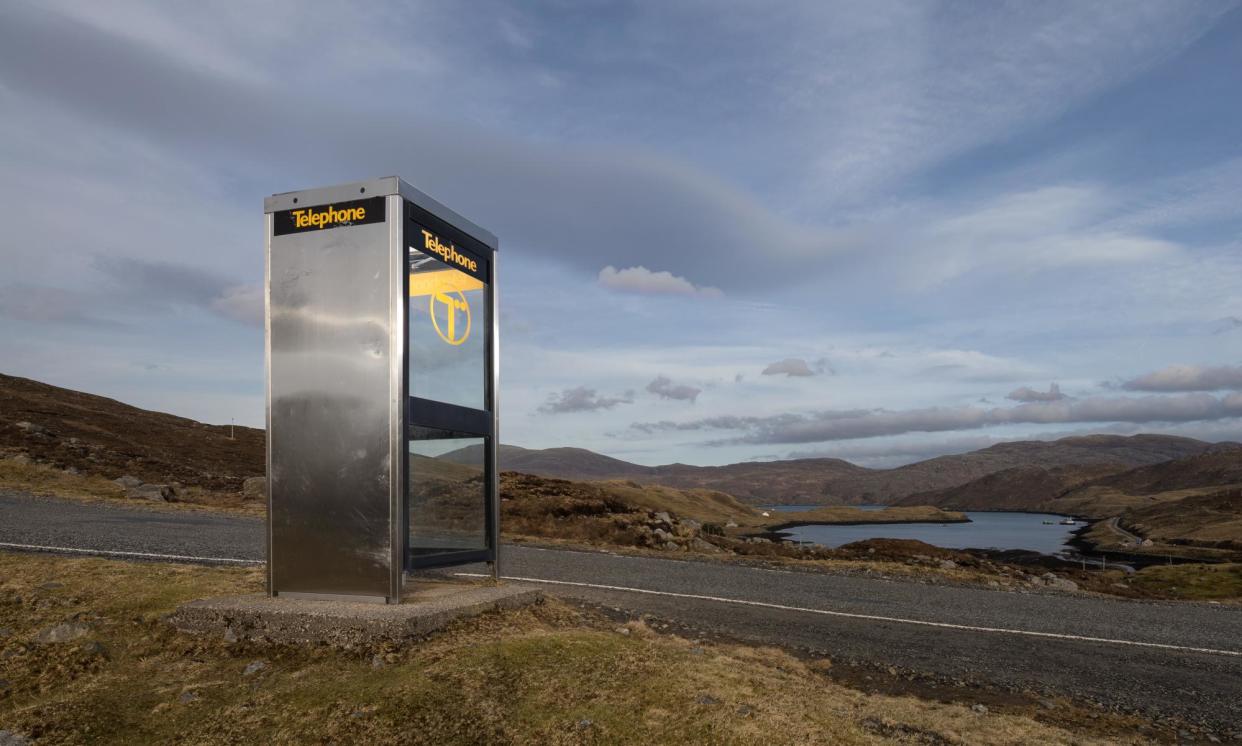Campaign launched to save ‘boringly ugly’ 1980s BT phone boxes

Campaigners are trying to secure listed status for the “boringly ugly” telephone boxes that BT controversially used to replace thousands of red phone boxes in the 1980s.
The Twentieth Century Society, which champions outstanding examples of modern design, has applied for listed status for one KX100 box each in England, Scotland and Wales before they are removed next year.
It says they represent a “final flourish of design-led telecommunications infrastructure in the public realm”.
The featureless glass and steel booths, described as “utterly bland” and “boringly ugly” by the Guardian, were used from 1985 to replace thousands of the cherished red K2 and K6 boxes designed by Sir Giles Gilbert Scott.
At the time, the boxes were promoted as vandal-proof, airy and wheelchair accessible. As the glass door did not extend to the ground, they were easier to clean and less likely to smell of urine – which had become a feature of the red boxes.
But BT later conceded that the new boxes were unpopular with the public. In a 2010 account of a history of telecommunications in the UK, BT said: “Popular opinion was that the square shape seemed clinical and that something softer and more rounded would be preferable.”
The Thirties Society, the forerunner organisation to the Twentieth Century Society, led a successful campaign in 1980s and 90s to list 3,000 of Gilbert Scott’s red phone boxes.
Now the society says it is time to preserve a handful of examples of the newer boxes as they represent the “last in the line of a uniquely 20th-century archetype”.
Related: The last phone boxes: broken glass, cider cans and – amazingly – a dial tone
It accepts that a mass listing of KX100s would be “neither credible nor desirable”. But it has applied for listed status for three of the most historically significant ones in the UK. They are:
In England, the 100,000th box to be installed in the country, located at Dunsop Bridge in Lancashire, which sits at the geographic centre of Great Britain and its 401 associated islands.
In Scotland, a contender for the country’s most remote and scenic payphone near Maaruig, on the Isle of Harris. It is believed to be the only example still bearing the full original yellow British Telecom livery.
In Wales, an experimental model at the Centre for Alternative Technology in Machynlleth, which is uniquely powered by a solar panel atop the kiosk and an adjacent 18ft-high wind turbine.
Oli Marshall, campaigns director, said: “C20 Society has been the guardian of Britain’s telephone boxes for 40 years, and we’re now reviving our famous campaign in an attempt to preserve a handful of the underappreciated KX100s – the last in the line of the public payphone. It may be viewed as the ‘ugly duckling’ in comparison with the iconic red phone boxes, but with these three kiosks, we’ve identified the very best exemplars across the country that deserve their place in the history books.
“There’s no small irony that it was the arrival of the KX100 model that first spurred the society into action back in 1985. Once the slayer of classic red kiosks that we fought so vigorously to repel, now itself being proposed for heritage protection. What goes around comes around.”
At their peak in the early 1990s, there were just over 100,000 public payphones in the UK. There are now fewer than 20,000.
LISTING CONTROVERSIES
British Library, London
The future King Charles once likened the British Library to an “assembly hall of an academy for secret police”. But in 2015, the red-brick building by the late Colin St John Wilson was granted the highest heritage honour in the form of Grade I-listed building status.
Dorman Long tower, Redcar
The industrial tower was demolished in 2021 despite being granted last-minute Grade II-listed status because of its importance in the industrial heritage of Teesside. The Tees Valley mayor, Ben Houchen, managed to convinced the then culture secretary, Nadine Dorries, to de-list the building in order to make the site cheaper to develop.
Cooling towers
The Department for Culture, Media and Sport ruled that cooling towers should be immune to listed status. But campaigners believe that at least one of the 45 remaining cooling towers, designed by Sir Frederick Gibberd, the architect of Liverpool’s Metropolitan Cathedral and Harlow town, should be preserved for posterity.
Milton Keynes shopping centre
To the disgust of its owners and the bewilderment of many customers, the town’s 1970s shopping centre was granted Grade II-listed building status in 2010.
Pennine Tower restaurant, Lancaster
The motorway service station between junctions 32 and 33 on the M6 looks more like an air traffic control room than a cafe. It was listed in 2012 as an example of the positive contribution the car has made to the built environment.


